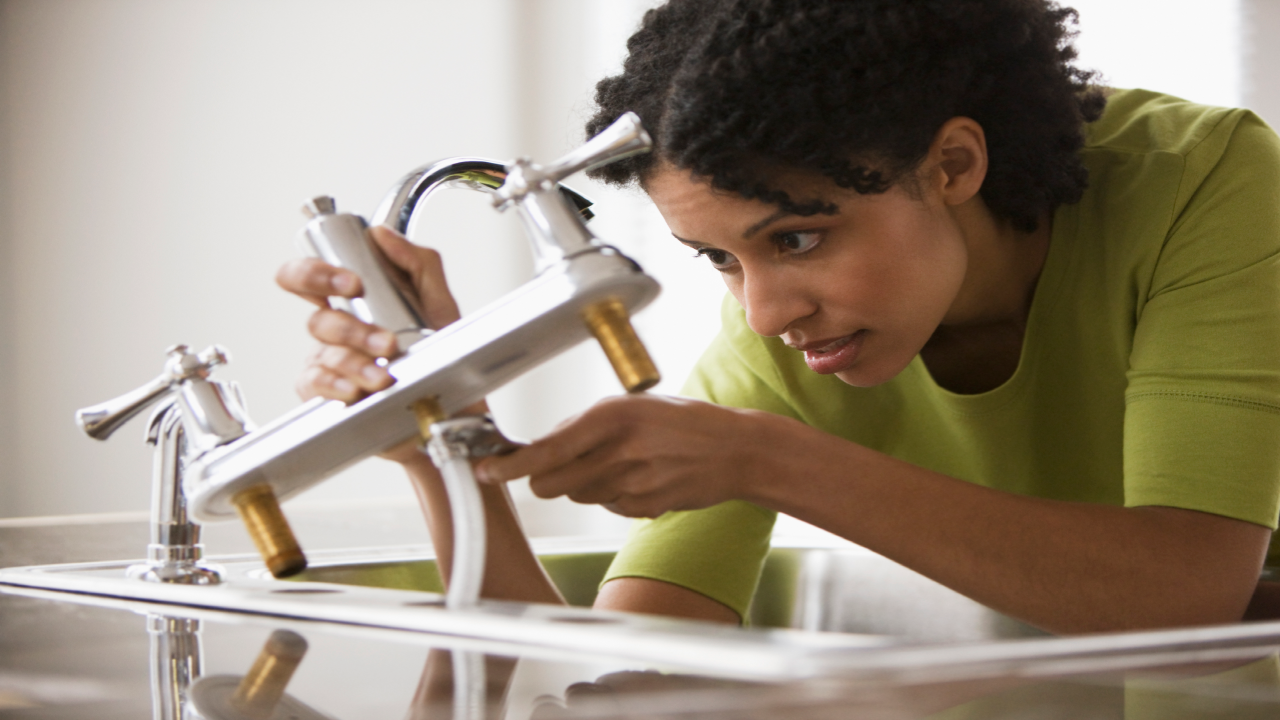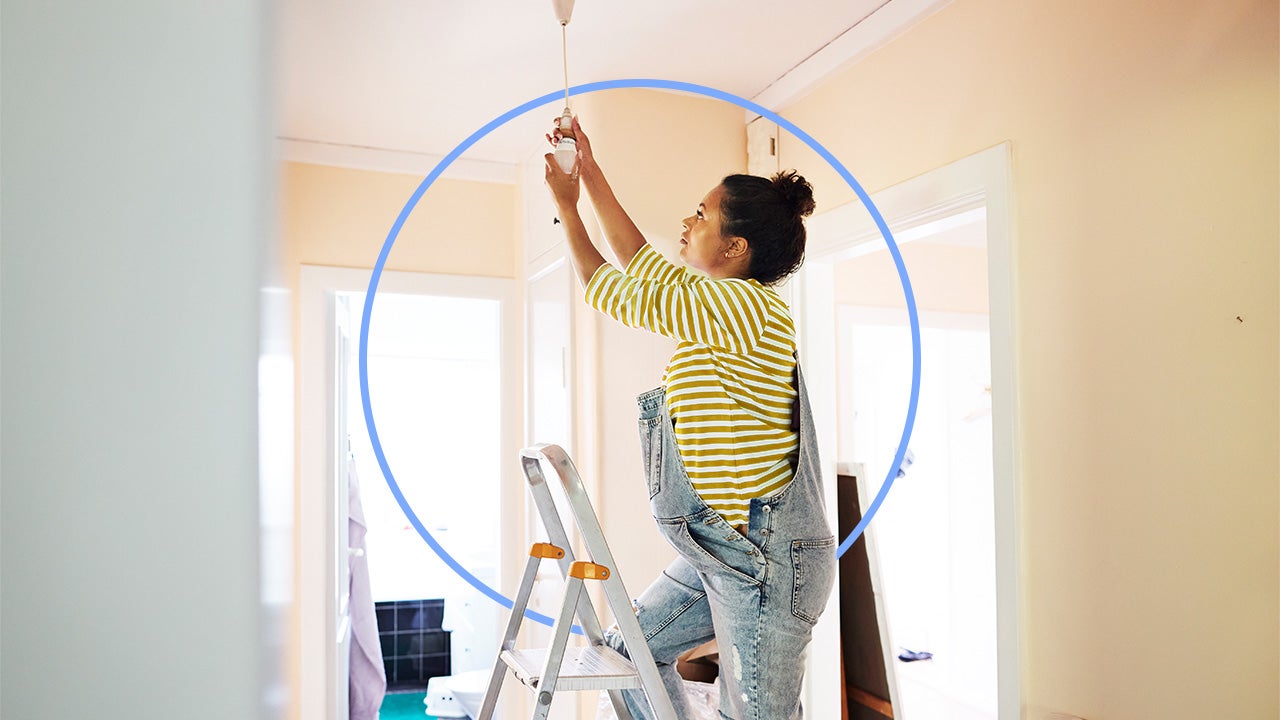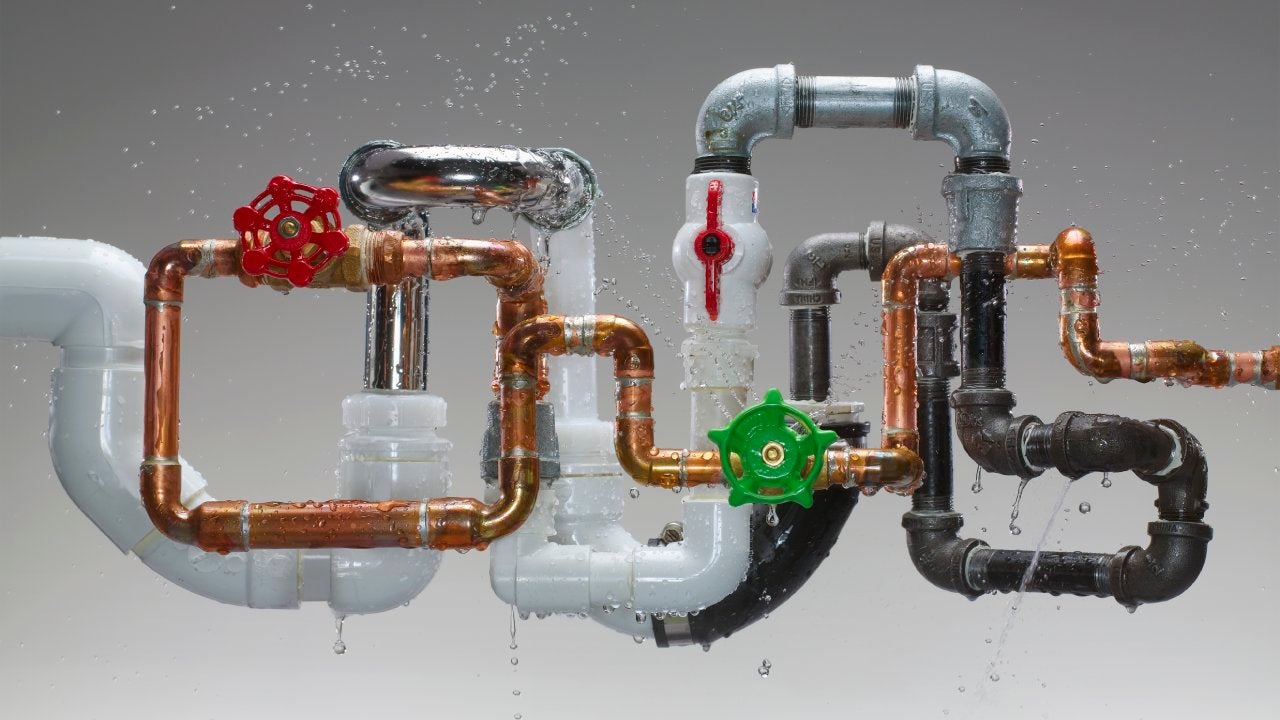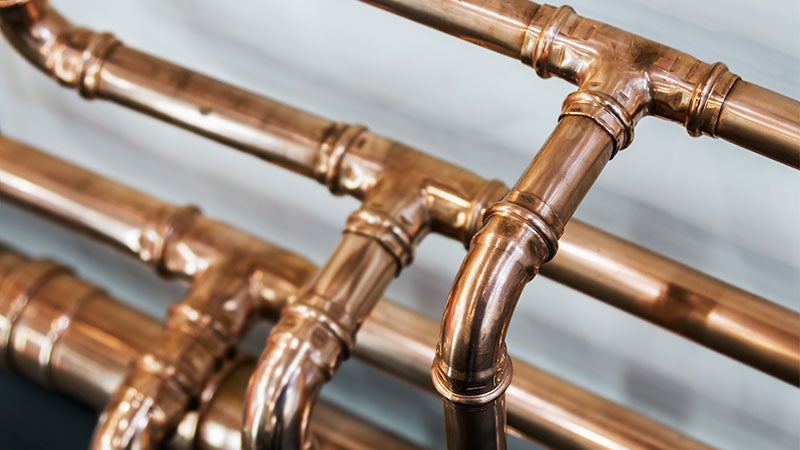How to install a kitchen faucet

When it comes to household plumbing, homeowners are usually warned off do-it-yourself projects. And the warning is not entirely baseless, because a DIY plumbing job can turn into a disaster if you don’t have enough knowledge or experience with waterworks. However, replacing a kitchen faucet is one of those projects that even a novice DIY-er can handle. By not using a licensed plumber, you can save $260 to $480 in labor costs, according to Angi, the contractor/client search service.
Here’s how to install a faucet step by step.
Prep work
The very first step in replacing a kitchen faucet is: get to know your sink. Clear everything from underneath the sink and check the number of holes it uses. A two-hole sink can sometimes accommodate a one-hole faucet, but you can’t fit a one-hole sink with a two- or three-hole faucet (a two-hole faucet has one hole for the faucet and a second hole for an accessory; the three-hole has separate hot and cold handles alongside the central tap). You should count the holes before investing in a new faucet, especially if you’re going for a different type than your current one.
Don’t forget that installing a faucet requires you to be on your back for the most part, and having a pillow makes the task more comfortable. A pan or towels to catch drips and safety glasses to protect your eyes from debris are also necessary. Make sure to turn off the power if you have an electrical outlet below the sink.
Turn off water supply
Before you can start work on the faucet, you need to turn off the hot and cold water supply to the sink, which can be done by reaching underneath the sink and turning the valves clockwise. If there are no stop valves, you need to shut off the water to the entire house. The valves can sometimes be hard to turn if they haven’t been used in a while, and in that case, try using a pair of pliers or a rag for a firmer grip. Make sure to relieve pressure in the lines by opening the faucet handles.
Next, disconnect the water supply to the faucet by removing the nuts that connect the supply line, using an adjustable wrench.
Remove faucet supply line
To take out the faucet, first remove the old supply lines connection. If you have a two-handle faucet, the two water supply lines will be connected to the hot and cold water valves directly. You have to remove the line connections before unscrewing the mounting nuts. For a single handle faucet, the supply lines are built in and if there is mounting hardware, it is usually placed directly over the lines.
Once you have unscrewed the nuts that connect the supply lines to the valves, remove the nut that connects the diverter to the sprayer hose with a basin wrench. After all the lines under the sink have been disconnected, the old faucet can be removed.
Remove the old faucet
A faucet is typically connected by some kind of hardware to the underside of the sink. Locate and remove the mounts connecting it to take out the faucet. If the mounts or nuts are difficult to remove or rusting, try applying a penetrant and leave it to soak in and loosen the hardware. Afterwards, break any caulk seal and clean the area before installing the new faucet.
Install new faucet
To install the new faucet, first place the gasket over the holes in the sink and put on the deck plate. If you’re planning to use caulk or putty, make sure to first refer to the instruction manual of the faucet. Next, slide the faucet lines into the holes and reinstall the nuts and washers under the sink just as you had removed them. Tighten the mounting nut and brackets until they are secure.
Connect supply lines
Some newer faucets come with flexible tubing for the hot and cold supply lines already attached. If your faucet doesn’t, you need to connect these tubes yourself. Make sure to first wrap the threads counterclockwise with Teflon tape and then attach them to the hot and cold water supply valves underneath the sink.
Once the installation is complete, slowly turn on the water supply to check for leaks and loose connections. Make adjustments wherever needed and test again to ensure the faucet works just as it should.
How long will it take to install the faucet?
Replacing an existing faucet usually takes an hour or two — for the pros. If it’s your first time handling any sort of waterworks, it could easily take you more like eight hours, the equivalent of an entire day, to replace a kitchen faucet. You may also need to buy high-quality wrenches (including a pipe wrench), tube cutters, heavy-duty pliers and other tools required for the job, if you don’t already own them.
When should you get a pro to install the faucet?
Though installing a kitchen faucet is among the simpler of plumbing jobs, there are a few scenarios in which professional installation might be called for.
- Systemic changes: DIY faucet projects work best if it’s a straightforward replacement: The simpler the swap out, the more likely your success. If the installation process requires any modifications to the fixtures or parts of the plumbing system itself — even if it’s just to gain access — then you probably want to hire a pro for the job.
- Temperamental system: If you’ve had recent or repeated problems with your kitchen plumbing, it might be better to have a plumber deal with the faucet. There could be some bigger structural issues that your efforts could trigger or magnify.
- Signs of damage: Similarly, if during the installation you encounter any signs of corrosion, leaks or other significant damage to the supply lines or pipes, abort the mission and seek out some serious help. You don’t want to make things worse.
- Warranty details: Most new faucets come with manufacturer warranties. If you break or damage the item in the course of putting it in, however, you may risk voiding the warranty (many won’t cover problems arising from “improper or incorrectly performed installation,” which they could claim that you as an amateur did) and have to pay out of pocket to replace or repair the device. In any case, be sure to read the fine print.
You may also like

Home renovations and repairs: Should you DIY or hire a pro?

Which plumbing pipes cost the most money?

How much does it cost to install or replace plumbing?



